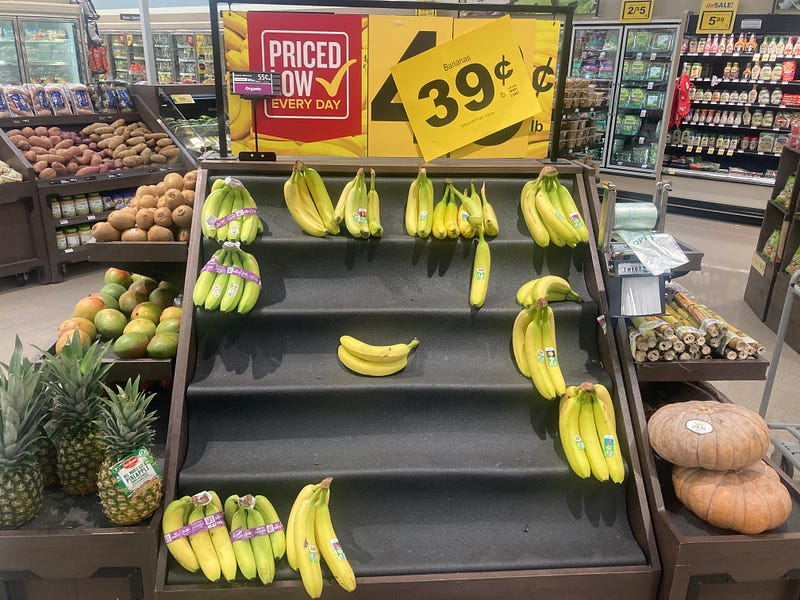Innovative Strategies for a Profitable, Sustainable Grocery Store
Written on
Chapter 1: The Pricing Puzzle
Recently, I delved into the pricing strategies for bananas at local grocery stores. This investigation sparked my interest in how grocery retailers determine the prices for their produce. It’s commonly noted that grocery stores aim for a profit margin of 40% on produce items. However, bananas typically yield only about 15% profit. This discrepancy raises questions: is the 40% the potential profit if every banana sells immediately, while the 15% reflects the reality after markdowns as bananas lose their appeal and are eventually discarded?
Grocery stores incur substantial losses each time they discard unsold produce, encompassing both the initial investment in the goods and waste management costs. Imagine if these retailers could enhance their banana profitability while simultaneously minimizing food waste.
Section 1.1: The Solution
The key to achieving this balance lies in employing real-time digital pricing alongside machine learning techniques. This approach would factor in variables like expiration dates, purchasing trends, competitor pricing, and insights from store managers.
For instance, consider the banana display shown above, where a new price tag has been affixed over the original. This method can contribute to the dwindling stock of bananas. Additionally, producing and posting these new signs incurs costs, albeit minor. However, when applied across numerous products and stores, these costs can accumulate significantly.
Subsection 1.1.1: A Streamlined Approach

What if a central computer system at a grocery chain could automatically adjust prices on digital displays, based on comprehensive data about products, customer buying habits, local competitor prices, and managerial feedback?
In the case of bananas, this system could align price with freshness, charging more for recently stocked items. Furthermore, grocery stores could encourage customers to purchase based on specific price points, optimizing sales. The digital displays would convey richer information than static signs, enhancing consumer education about sustainability and supply chains.
Section 1.2: Enhancing the Shopping Experience
Real-time digital pricing could also promote complementary purchases. For example, a digital display for avocados could suggest checking the chips aisle, while the milk display might prompt a visit to the cereal section. Moreover, grocery stores could highlight promotions for related products, fostering a more engaged shopping experience.
Chapter 2: The Future of Consumer Behavior
The first video dives into the costs associated with launching a grocery or convenience store, highlighting key financial considerations for new retailers.
The second video explores strategies for getting products onto grocery store shelves, offering insights on maximizing profitability in the retail space.
As grocery stores adopt real-time pricing displays, there will likely be increased research into consumer behavior. Advanced digital interfaces could monitor customer interactions with these displays, revealing how such changes influence purchasing decisions.